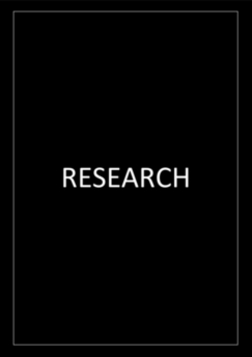
Etiological Profile of Arthritis at the Teaching and Departmental Hospital Oueme-Plateau of Porto-Novo
Authors: Finangnon Armand Wanvoegbe , Ayaba Agossa , Kouessi Anthelme Agbodande , Adebayo Alassani , Edgard Tohounkpo , Yasmine Agonma , Alkinel Sokenou , Espoir Gandonou , Albert Dovonou , Angèle Azon Kouanou , Zavier Zomalheto
In Research
Introduction: Arthritis is common in rheumatology and has a large number of causes. Our goal in this study was to find out the etiological profile of arthritis in the rheumatology unit of the Teaching and Departmental Hospital Oueme-Plateau. Methods: This was a cross-sectional, descriptive, and analytical study, with retrospective collection, on the files of patients who consulted the rheumatology unit of the Teaching and Departmental Hospital Oueme-Plateau of Porto-Novo, from May 2015 to September 2021. All patients with arthritis were included. The data collected were recorded and analyzed using EPI INFO software version 7.2. Results: Out of 2416 records, 68 patients presented with arthritis, i.e., a hospital frequency of 2.8%. The mean age was 49.3 (± 16.9) years with extremes of 5 and 80 years. The majority were women (60.3%) with a sex ratio of 0.7. These patients were hypertensive in 42.6% of cases and diabetic in 10.3% of cases. The non-specific biological inflammatory syndrome was present in 75.5% of the 53 patients who underwent these explorations. Polyarthritis was present in most cases (52.9%), followed by monoarthritis (26.5%). The most recurrent etiological groups were autoimmune causes (38.8%), microcrystalline (35.8%), and infectious (14.9%). Rheumatoid arthritis was the most frequent cause (36.8%), followed by gout (25.0%), chondrocalcinosis (10.3%), tuberculosis (7.3%), septic arthritis (4.4%), and mixed spondyloarthritis (4.4%). Autoimmune causes were the first etiological group in women (52.5%) and microcrystalline causes were the first etiological group in men (59.3%), with a statistically significant difference (p = 0.010). Conclusion: The causes of arthritis in the Teaching and Departmental Hospital Oueme-Plateau are multiple, but are dominated by autoimmune, microcrystalline, and infectious causes.
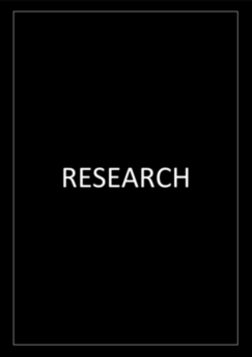
Assessment of Cormic Index and Other Anthropometric Parameters of Young Adults with Sickle Cell Anaemia in Ile-Ife, Nigeria
Authors: Muritala Abiola Asafa , Rahaman Ayodele Bolarinwa , Samson Adeoye Oyewade , Oluwadare Ogunlade
In Research
This study assessed the effect of Haemoglobin SS (Hb SS) on cormic index and some other body anthropometric indices among students of Obafemi Awolowo University, Ile-Ife, Nigeria. A total of 100 young adults (18 – 40 years) participated in the study. They were classified into two groups; 50 cases (participants with Hb SS) and 50 control (participants with Hb AA) which were purposively selected after haemglobin typing using electrophoresis method. The cases and controls were age-and sex-matched. The weight, sitting and standing height were measured by using Seca stadiometer-model 216 following standard protocol. Cormic index (CI%) was calculated using sitting height x 100/ standing height while the body mass index (BMI) and body surface area were calculated using Keys and Monsteller formulae respectively. The data were analyzed using descriptive and inferential statistics and alpha value was set at p < 0.05. The mean values of weight in kg [54.39 ± 5.54 vs 60.48 ± 8.65 (t= -4.195, p < 0.001], body mass index in kg/m2 [19.58 ± 2.08 vs 21.48 ± 2.91 (t = 6.068; p < 0.001)], cormic index in % [44.71 ± 6.05 vs 50.03 ± 1.33 (t = -3.760; p < 0.001)], subischial leg length in cm [92.22 ± 10.76 vs 83.84 ± 4.41 (p < 0.001; t = 5.092)] and body surface area in m2 [1.59 ± 0.09 vs 1.68 ± 0.14 (p < 0.001, t = -3.798)] of cases were significantly different from those of controls respectively. In conclusion, this study showed that Hb SS is associated with lower weight, sitting height, body mass index, body surface area and cormic index but higher subischial leg length when compared with Hb AA.
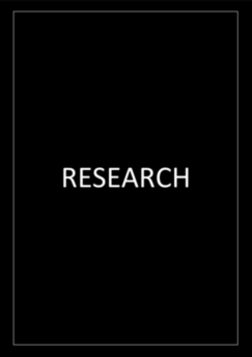
A Study of Subjective Cognitive Decline and Subclinical Depression Based on Dynamic Network Connectivity of Cerebral fMRI Data
Authors: Zhao Zhang , Guangfei Li , Zeyu Song , Xiaoying Tang
In Research
A certain number of fMRI studies on subjective cognitive decline (SCD) have been widely debated. They mainly focus on the differences in brain structure and function between SCD and normal people, while more studies focus on objective cognitive decline. The relationship between psychological factors and SCD via cerebral fMRI data in the elderly is rarely discussed. In this study, we included 66 SCD patients and 63 normal controls (NC) to investigate the neural processes amid the psychological aspects of those with subclinical depression and SCD using dynamic network connectivity and to provide theoretical support for neuroimaging for improved Alzheimer's disease prevention and therapy. We calculated temporal flexibility and spatiotemporal diversity via fMRI data using Shen’s 268 brain template and No. 74 brain region was selected by t-test and correlation analysis. In the NC group, no significant correlation was observed in temporal flexibility value of No. 74–SCD and Hamilton depression scale HAMD–SCD, whereas No. 74–HAMD showed a significant correlation. In the SCD group, all of the three parameters exhibited significant correlation. Mediation analysis obtained the mediation model of No. 74 brain region, subclinical depression, and subjective cognitive decline (No. 74→HAMD→SCD). The results show that visual system plays an important role in subclinical depression, and subclinical depression increases the risk of SCD.
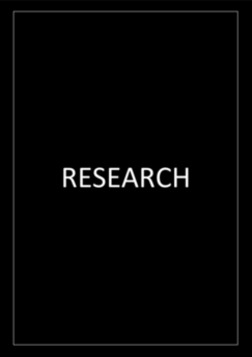
Menarcheal Age Variation Between Chakma Tribal and Bengali Non-Tribal Girls of Tripura, North-East India
Authors: Shilpi Saha , Satyapriya Roy
In Research
Menarche is the first onset of menstrual bleeding and considered as a significant marker of attaining sexual maturity in girls. Various factors may influence age at menarche like genetic, nutritional status, environment, socioeconomic status and education. The main purpose of this study is to determine mean age at menarche of Chakma tribal and Bengali non tribal girls of Tripura with their ethnicity and socio economic condition. Data on age at menarche have been collected by using Status quo method of recall from adolescent Chakma tribal and Bengali non tribal girls of different schools of North, Unokoti, Dhalai and South District of Tripura. An effect of socioeconomic condition on age at menarche was taken in consideration. Among studied sample 357 Chakma tribal girls and 368 Bengali girls have experienced menarche. Median age at menarche, estimated by probits, is 12.53 years (0.12) and 11.83 years (0.13) for the Chakma and Bengali girls respectively. However, the age differences are found to be statistically highly significant (P
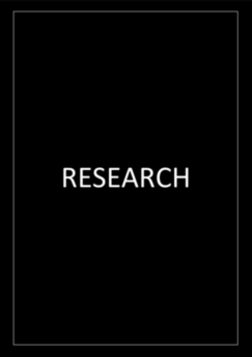
Predicting the Severity of COVID-19 Pneumonia in Children
Authors: Huseynova Ilhama Yelmar , Hasanov Alekber Qazanfar , Gafarov Ismayil Adil
In Research
Today, the relationship between cytokines in blood serum and the pathogenesis of the disease during COVID-19 in children has not yet been fully clarified. Research shows that the course of the disease in children is more satisfactory than in adults. However, the clinical profiles and pathophysiology of COVID-19 in children remain unclear. The aim of our study was to determine the level of cytokines in children with COVID-19 pneumonia and to study their role in predicting the severity of the disease. For this purpose, 75 children under the age of 18 were included. The patients included in the study were divided into 2 groups according to the degree of severity: 49 (65.3%) moderately severe patients with COVID-19 pneumonia were included in group I, and 26 (34.7%) patients with severe COVID-19 pneumonia were included in group II. Clinical, instrumental and laboratory examinations, determination of cytokines IL-1β, IL-6, IL-18, vitamin D, fibrinogen, ferritin and D-dimer levels were included in the examination methods of patients. Fever (66 cases (88.0%)) and cough (74 cases (98.7%)) were the most frequently reported cases. Laboratory examinations of blood in children with COVID-19 (PCR) showed a tendency to lymphocytosis and thrombocytopenia, an increase in ESR, CRP, ferritin, D-dimer, fibrinogen, and cytokines levels. In comparison between groups, the levels of IL-1β, IL-6, IL-18 increased in group II compared to group I. Determination of pro-inflammatory cytokines IL-1β, IL-6, IL-18 in children with COVID-19 (PCR), depending on the severity of the disease, is appropriate for early diagnosis and prediction of the course of the disease.
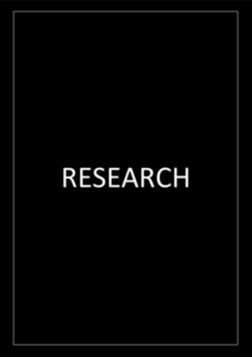
Patterns of Abdominal Surgical Emergencies of Patients Treated at Ambo Referral Hospital from January 1, 2018 to December 30, 2019, Oromia Regional State, Ambo, Ethiopia
Authors: Leta Alemu Diba , Abel Ambaye Anfucho
In Research
Acute abdomen is an acute onset of abdominal disease entities that require immediate surgical intervention in most of the cases. It is the commonly encountered emergency in the practice of general surgery but there was no much information regarding its magnitude in our country. Objective: This study had assessed the pattern of acute abdomen of patients surgically treated at Ambo referral hospital from January 2018-Dec. 2019 Methodology: This study was conducted at Ambo referral hospital and retrospective analysis of surgically treated acute abdomen patients from January 2018-Dec. 2019G. C. Enrolled patients medical record number was collected from surgical operation registration book and the charts were collected from chart collection room. Results: During this study period there were total of one hundred and eleven (111) patients admitted with diagnoses of acute abdomen and surgically treated on emergency basis. Males were more affected than females and most affected group were young age falls in 2nd and 3rd decades. The most common presenting symptoms were abdominal pain and vomiting whereas abdominal tenderness and distension were the leading signs. The leading causes of acute abdomen were acute appendicitis followed by intestinal obstruction and abdominal trauma. The investigation was ordered according to clinical diagnoses to aid/ confirm diagnoses. Post-operative stay was relatively similar with studies conducted in some part of the country and all over the world. In the study period above 90% were discharged with improvement where as 9% were died. Conclusion: This study depicted the commonest presenting symptoms and signs, most common etiology of acute abdomen and pre and post op stay which affected the outcome. Still some variables need deep study like why trauma becomes a 3rd leading cause and less affected females.
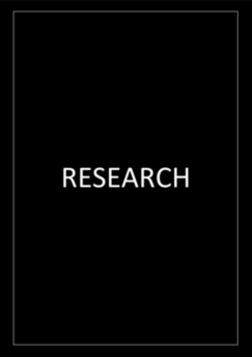
Bioengineering of bone tissues using bioreactors for modulation of mechano-sensitivity in bone
Authors: Darshna , Rahul Kumar , Pradeep Srivastava , Pranjal Chandra
In Research
Since the last decade, significant developments have been made in the area of bone tissue engineering associated with the emergence of novel biomaterials as well as techniques of scaffold fabrication. Despite all these developments, the translation from research findings to clinical applications is still very limited. Manufacturing the designed tissue constructs in a scalable manner remains the most challenging aspect. This bottleneck could be overcome by using bioreactors for the manufacture of these tissue constructs. In this review, a current scenario of bone injuries/defects and the cause of the translational gap between laboratory research and clinical use has been emphasized. Furthermore, various bioreactors being used in the area of bone tissue regeneration in recent studies have been highlighted along with their advantages and limitations. A vivid literature survey on the ideal attributes of bioreactors has been accounted, viz. dynamic, versatile, automated, reproducible and commercialization aspects. Additionally, the illustration of computational approaches that should be combined with bone tissue engineering experiments using bioreactors to simulate and optimize cellular growth in bone tissue constructs has also been done extensively.
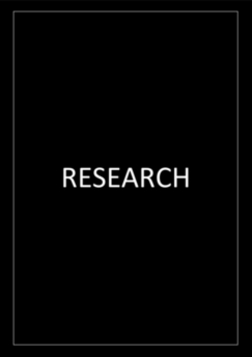
Genotoxic and mutagenic potential of 7-methylxanthine: an investigational drug molecule for the treatment of myopia
Authors: Harjeet Singh , Harmanpreet Singh , Sunil Sharma , Harmanpreet Kaur , Arvinder Kaur , Satwinderjeet Kaur , Nikhil Shri Sahajpal , Alka Chaubey , Navid Reza Shahtaghi , Inderjeet Kaur , Subheet Kumar Jain
In Research
7-Methylxanthine (7-MX, CAS No. 552-62-5, purity 99.46%) is the first orally administered drug candidate, which showed anti-myopic activity in different pre-clinical studies. In the present study, we investigated the in-vivo genotoxic and mutagenic toxicity of 7-MX in Wistar rats using comet/single-cell gel electrophoresis, chromosomal aberration and micronucleus assays after oral administration. For the single-dose study (72 h), two doses of 7-MX 300 and 2000 mg/kg body weight were selected. For a repeated dose 28 d study, three doses (250, 500, and 1000 mg/kg) of 7-MX were selected. The doses were administered via oral gavage in the suspension form. Blood and major vital organs such as bone marrow, lung and liver were used to perform comet/single cell gel electrophoresis, chromosomal aberration, and micronucleus assays. The in-vitro Ames test was performed on TA98 and TA100 strains. In the chromosomal aberration study, a non-significant increase in deformities such as stickiness, ring chromosome, and endoreduplication was observed in bone marrow cells of 7-MX treated groups. These chromosomal alterations were observed upon treatment with doses of 2000 mg/kg single dose for 72 h and 1000 mg/kg repeated dose for 28 d. At a dose of 500 mg/kg, DNA damage in terms of tail length, tail moment, % tail DNA and the olive tail moment was also found to be non-significant in 7-MX treated groups. The Ames test showed the non-mutagenic nature of 7-MX in both strains of TA98 and TA100 of Salmonella typhimurium with or without metabolic activation. Thus, the present work is interesting in view of the non- genotoxicity and non-mutagenicity of repeated doses of 7-MX.
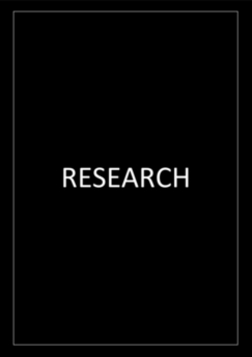
Exploring the History of Central Asia, Mahmudkhodja Behbudiy: The Bright Path Illuminated by the Enlightenment
Authors: Shavkat Miralimov
In Research
The article talks about the life and multifaceted activities of Mahmudkhodja Behbudiy, a faithful son of the Uzbek people, the father of the Turkestan Jadid movement, a legal scholar, a great enlightener and intellectual, who sacrificed his life in the struggle for independence of the nation. The life of the great reformer Mahmudkhodja Behbudiy, the genius of human intellect, was extremely difficult and full of contradictions like the turbulent period of late 19th and early 20th century. Hundred years after Behbudiy’s tragic death, his life serves as an exemplary lesson for the young people of present days. The social life of Turkestan in the end of the 19th century is highlighted with the rise of new movement that was destined to play an important role in the region’s political processes. The movement called “Jadidism” (from the Arabic word “Jadid” for ‘new”), united the most progressive thinking intellectuals of the region. Jadidism, having originated as a movement of social thought and initially limited by the framework of ideas aimed at reforming school education, went through a difficult path of development, reaching the point of turning into a powerful political movement with definite political requirements of the national-state self-government of Turkestan. This evolution of the Jadidism movement in Turkestan had become possible due the great contribution of Mahmudkhodja Behbudiy and his multi-faceted work. On the onset of the 20th century, in the pursuit for the national development, enlightenment and education, the Turkestani Jadidists – Mahmudkhodja Behbudiy, Abdulla Avloniy, Munawwar Qori, Abdullah Qodiriy, and many others – realized that in the existing state of colonial exclusion, separated and dispersed rebellions, prevalent ignorance and intolerance, the society’s advancement would not be possible to achieve nor there would be a hope for the spiritual and national liberation. It is hard to fully appreciate the merits of Mahmudkhodja Behbudiy in the creation of new-method Jadid schools, in the formation and development of the national press, publishing, librarianship, dramaturgy and theatrical art. The name of Mahmudkhodja Behbudiy, who spared his life in the struggle for the independence and freedom of the nation, was unjustly forgotten and blown away by the social and political storms of the 20th century. In the modern age of independence, the Republic of Uzbekistan puts emphasis and efforts on restoration of the good name of the great son of the Uzbek people.
